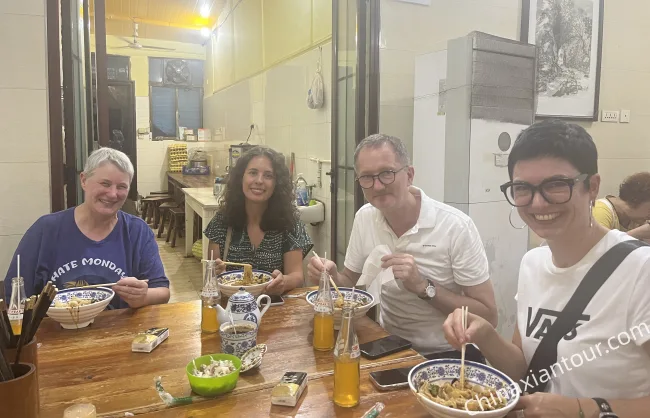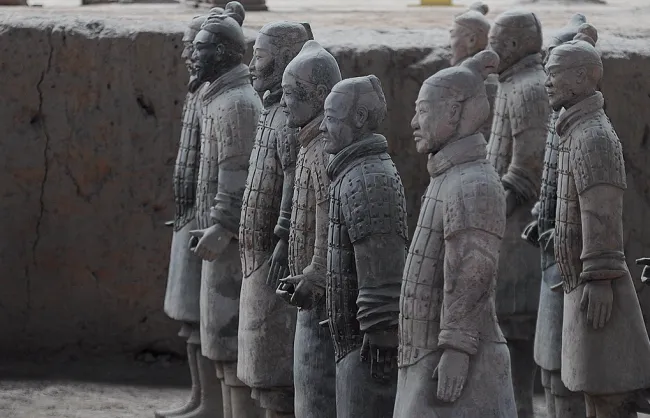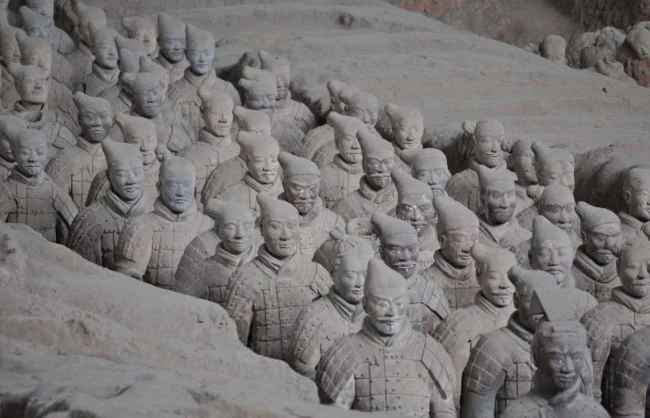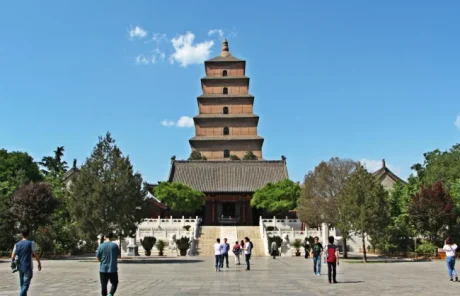Shaanxi History Museum – Witness of the Splendid History of Shaanxi
Established in 1983, the Shaanxi History Museum in Xi’an is the first large-scale modern national museum in China which is northwest of the Great Wild Goose Pagoda. With its one central hall and four corner pavilions being built in the Tang architectural style, the museum boasts an 11,000-square-meter exhibition space and over 1.7 million artifacts spanning a time frame of over one million years.
Among its extensive collections, some of the most impressive ones include the bronze vessels from the Shang and Zhou Dynasties, pottery figurines of different dynasties, gold and silverware of the Han and Tang Dynasties, and unique murals from Tang Dynasty tombs. For anyone seeking a profound understanding of Chinese history, the museum is a can’t-miss for their trip to Xi’an.
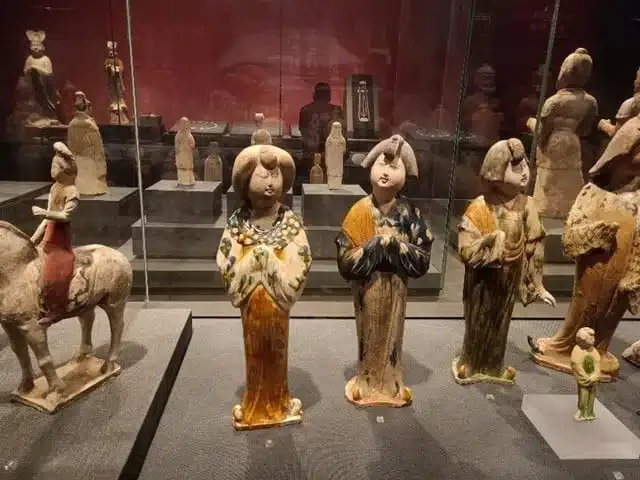
Quick Facts about Shaanxi History Museum
- Type: Historical Museum (See more Famous Museums in Xi’an)
- Period: from the Stone Age to the contemporary era
- Number of collections: over 1.71 million pieces
- Area: 65,000 square meters (16 acres) in total; 11,000 square meters (2.7 acres) of the exhibition halls
- Opening Hours: March 15th–November 14th: 8:30-18:00; November 15th–March 14th next year: 9:00-17:30. The museum is closed on each Monday except the legal holidays.
- Time Needed: 3-4 hours
- Ticket: free visit for the basic exhibitions; RMB 30 for the exhibition of Treasures of Great Tang Dynasty; RMB 270 for the Gallery of Mural Treasures of Tang Dynasty
- Best Seasons: All Seasons
- Recommended for: history fans, Tang culture lovers
- What to see: elegant bronzes, pottery figures of past dynasties, murals in the tombs of Tang Dynasty, gold and silver wares in Western Han and Tang Dynasties, etc.
- Location: No. 91, Xiaozhai East Road, Yanta District, Xi’an, Shaanxi Province; on the northwest side of famous Big Wild Goose Pagoda in the southern suburbs of Xi’an
Layout & Main Exhibition Halls
The museum is comprised of three main exhibition halls, and other special exhibition halls and temporary exhibition halls. The three main exhibition halls will introduce you to relics and artifacts from early human ancestor period to the Tang Dynasty.
The first exhibition hall is on the first floor, emphasizing on civilization of early human ancestors and relics from the Western Zhou period and the Qin Dynasty. The second exhibition hall is on the second floor, focusing on the rise and down of the majestic Han Dynasty and the cultural integration between agrarian and nomadic societies. Also on the second floor is the third exhibition hall, the highlight of the museum, introducing the brilliance of the Tang Dynasty during its peak period, and the history of Xian and Shaanxi after the decline of the Tang Dynasty.
Besides the basic halls, there are two additional paid exhibition halls on the underground floor, which are the Grand Tang Treasure Exhibition Hall (ticket price: 30 RMB) and the Tang Dynasty Mural Masterpieces Exhibition Hall (ticket price: 270 RMB). Both of these two paid halls will offer you a more in-depth exploration of the Tang Dynasty artifacts and murals.
What to See: Exhibitions and Relics in Shaanxi History Museum
In the museum, a large number of local relics are on display. The three basic exhibitions named Shaanxi Ancient Civilization, the display of Treasures of Great Tang Dynasty, and the Gallery of Mural Treasures of Tang Dynasty. In addition, some temporary or themed exhibitions would be held as well.
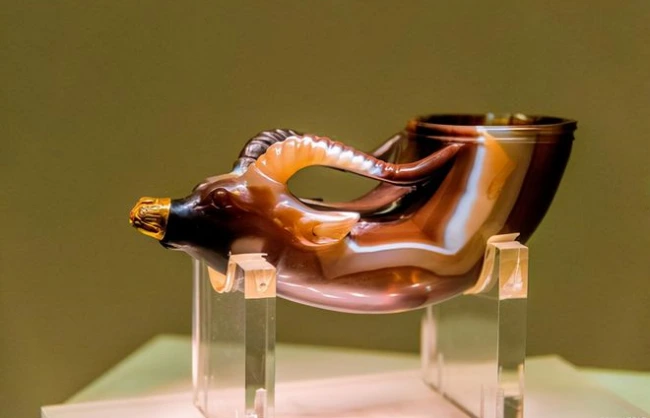
No.1 Exhibition Hall of Early Shaanxi Ancient Civilization
Stepping into this hall, you will get to learn the ancient culture in Shaanxi since the ancient people around 1.63 million years ago. The Lantian Man, together with Dali Man, in the early Paleolithic Age is the representative; and you can learn their life through the crude stone tools on show. As time went by, some cultures came into being in the Neolithic Age; and Banpo Site is the best-known, which is the matriarchal clan commune.
To Zhou Dynasty (about 1046-256 BC), particularly the Western Zhou Dynasty (1046-771 BC), the early country developed fast. The political, economic, and especially ethical systems established at that time have a profound influence on cultures later. As Shaanxi was the capital and political center in Western Zhou, the illustrious civilization can be seen from a lot of bronze wares, like diverse bronze tripods. Qin Dynasty (221-207 BC) is the first unified empire in Chinese history, leaving the indelible civilization featured on military power. The astonishing terracotta warriors were of the period, and Shaanxi History Museum has also collected some.
No. 2 Exhibition Hall of Legacy of Han Dynasty
The Western Han Dynasty (202 BC – 8 AD) founded its capital in Chang’an – Xi’an today. With the opening of the Silk Road, Chang’an, the starting point of the Silk Road, had gradually become the center of East Asian civilization and a well-known international metropolis in that age. Therefore, for the first time, China started to go to the world as a powerful country.
The Han tombs and plenty of cultural relics of the Western Han Dynasty in this exhibition hall would show you the first flourishing age in ancient China. The gilded silver bamboo-joint copper incense burner, the gilded bronze silkworm, the jade seal of empress, etc. are the most precious relics in this hall.
Later, during the Wei, Jin, and Southern and Northern Dynasties (220-581 AD), wars occurred and regimes changed frequently. Various nomadic minorities in the north migrated, conflicted, and merged with the agricultural civilization in Shaanxi. The Silk Road was still prosperous, and Buddhism was spread. The gold monster, painted figurines of ethnic warriors, Buddha statues, and so on shows the cultural fusion.
No. 3 Exhibition Hall of Prosperous Tang Dynasty
Have you heard of the great Tang Dynasty (618-907 AD)? It’s the most glorious age in Shaanxi as well as in China. In the Sui (581-618 AD) and Tang Dynasties, the capital Chang’an (now Xi’an) became the largest and most prosperous city in the world. With the Silk Road, China had extensive exchanges with the world comprehensively. A mass of Tang tri-color glazed ceramics, silver and gold wares reproduce the great age for visitors.
After Tang Dynasty, Shaanxi was no longer the capital of China. However, there are also fine relics to see of each dynasty, such as the porcelains of Yaozhou, and famille-rose porcelain honor guards of the Ming Dynasty (1368-1644 AD).
Gallery of Mural Treasures of Tang Dynasty
To see the murals of the Tang tombs, you have to go to Shaanxi History Museum. There are nearly 600 fine murals from more than 20 Tang tombs, covering over 1,000 square meters (1,196 square yards). In the murals, lifelike figures, utensils, landscapes, animals, plants, etc. were painted simply but vividly. It’s definitely a great chance to learn the rituals, customs, costumes, entertainment, and architectural styles of the Tang Dynasty.
97 murals among all these are the most valuable treasures, including that of the envoys from the tomb of Prince Zhanghuai, playing polo, the hunting trip, the guard of honor, and the maids in imperial palace of the princess Yongtai. There are also some copies of famous Tang paintings as a comparison, so that you can compare these paintings with the murals.
Treasures of Great Tang Dynasty
In October 1970, the treasures of the Tang Dynasty were discovered accidentally in Hejia Village. When digging the foundation, the workers found a pottery urn and a silver canister filled with gold and silver treasures. Later, another urn was unearthed by the archaeological team, and more than 1,000 pieces of relics were found in total. The treasures include gold and silver wares, jade ornaments, precious medicines, Chinese and foreign coins, etc.
This was one of the most important archaeological discoveries in the 20th century of the Sui and Tang Dynasties. But we still don’t know who was the owner of these treasures and why were they buried underground. More than 300 pieces of the treasures were displayed in Shaanxi History Museum, and you can also read the supplemented explanations by side of each one. The agate cup carved in a beast head is the rarest; moreover, the jade armbands inlaid with gold, the gold bowl with patterns of mandarin ducks and lotus petals, etc. are all worthy of a visit.
Recommended Xian Tours including the museum:
- 1 Day Xian City Tour
- 2 Days Xian Highlights Tour
- 3 Days Xian Education Tour
- 3 Days Beijing Xian Tour by Tran + Flight
History of the Shaanxi History Museum
The predecessor of the Shaanxi History Museum can be traced back to the Shaanxi Quangong Exhibition Hall established in 1909 and the Shaanxi Provincial History Museum established in June 1944. The latter was founded by Shaanxi Provincial Government with the historical relics collected in the Stele Forest, Xijing Library and the former Archaeological Association.
After several changes during wartime, it was named as Shaanxi Provincial Museum in June 1955. In the 1960s, the historical exhibitions, sculpture arts and steles forest were the three regular exhibitions of the Shaanxi Provincial Museum. With the archaeological discoveries in Shaanxi, hundreds of thousands of relics had been collected in the Shaanxi Provincial Museum by the 1970s.
When Premier Zhou Enlai came to Shaanxi for inspection in 1973, he put forward building a new museum for abundant relics resources to replace the small and miserable one. In 1983, the state and the Shaanxi Provincial Government invested jointly for the construction of the Shaanxi History Museum. Eventually, on June 20, 1991, Shaanxi History Museum was officially completed and opened. Its completion marked a new milestone in the development of Chinese museums. People could enjoy the exhibition themed on local history of Shaanxi, authentic Tang tomb murals, and essential Zhaoling Mausoleum relics at the beginning of its opening.
How to get to Shaanxi History Museum?
- By bus:
Take the city bus 5, 19, 24, 26, 27, 30, 34, 271, 400, 401, 521, 527, 701, 713 interzonal lines, Tourist Bus Line 8/ 610, or the Airport Shuttle Bus Shaanxi History Museum Line to the gate of the museum directly.
- By metro:
Take Xi’an Metro Line 2 or Line 3 to Xiaozhai Station, get out from Exit E, and walk east for about 700 meters (766 yards) to reach Shaanxi History Museum in 7-8 minutes.
Take Xi’an Metro Line 3 or Line 4 to Dayanta Station (Big Wild Goose Pagoda), come out the station from Exit A, and take a 10-minute walking westwards to Shaanxi History Museum about 800 meters (875 yards) away.
Shaanxi History Museum Travel Tips
- Though the ticket is free, you have to reserve the ticket through the official website or the official WeChat account of Shaanxi History Museum in advance. Currently, its maximum daily capacity for receiving visitors is 6,000 people.
- Ticket checking stops at 16:00 from Nov. 15 to Mar. 14, and at 16:30 from Mar. 15 to Nov. 14, respectively, on the day of visit. There is also a limit for visits of 6000 people each day.
- There are too many relics and artifacts in the museum. You can ask for a guide on extra payment. RMB 200 in Chinese or RMB 300 in English for the three basic exhibitions. RMB 50 in Chinese/RMB 100 in English for either the exhibition of Treasures of Great Tang Dynasty or the Gallery of Mural Treasures of Tang Dynasty. A guide can accompany a maximum of 10 visitors per time.
- Make sure the flashlight is turned off when you take photos, for flash photography is prohibited there. It is also suggested to take fewer photos in the museum; because the photos would not be good inside with darker light, and taking too many photos would delay your visit.
- The museum has no obvious off-season. Visitors need to be prepared for long queues.
- Security check is required to enter the museum. Don’t take any metal knife or hazardous thing. No drinking or eating in the exhibition halls.
- The display position of some collections in the museum will change according to the needs of the exhibition.
Nearby Attractions:
- Big Wild Goose Pagoda: Southeast of the museum. It was built in 652 AD in the early Tang Dynasty to store the Buddhist texts brought back to China from India.
- Great Tang All Day Mall: South to Big Wild Goose Pagoda, it is the cultural block based on Tang civilization. You can watch the sculptures in the pedestrian zone, and watch the impressive street performances and light shows at night.
- Xian City Wall: The best-preserved city wall in China, boasting a history of over 600 years. Visitors can walk or cycle atop the wall and enjoy a panoramic view of the city.
- Daxingshan Temple: One of Xian’s oldest temples which was originally constructed from 265 AD to 289 AD.


